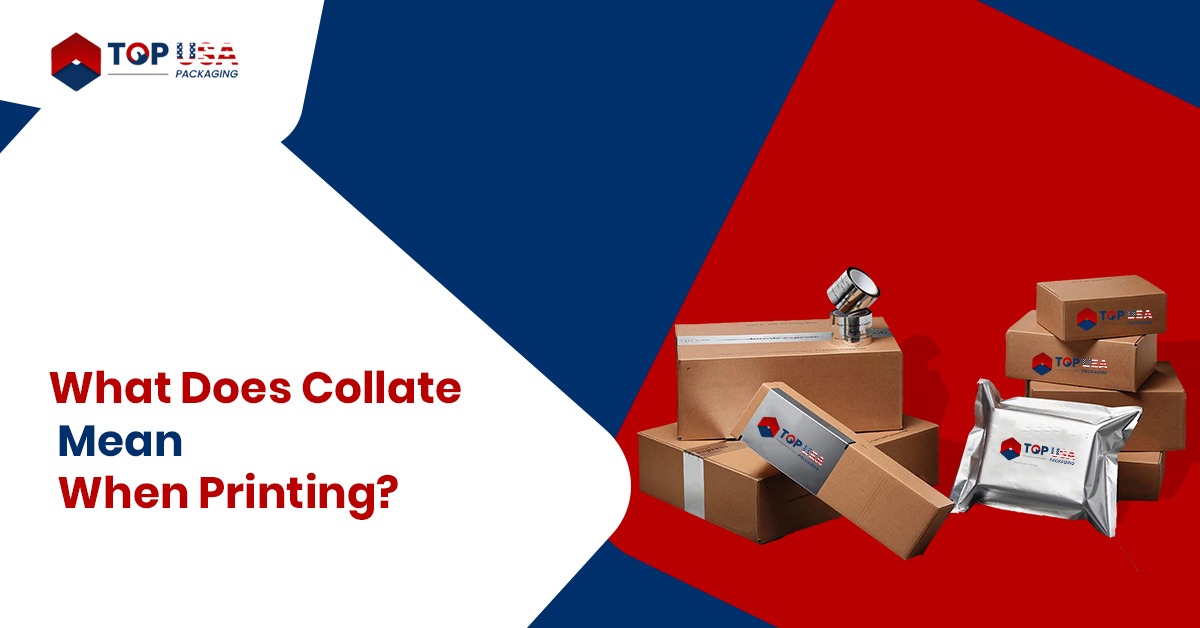To know the answer of this question “What does collate mean when printing?” you need to first know the term “collate.” It refers to a specific way of creating duplicates when printing multiple copies of a document. Have you ever used a printer and seen a “collate printing” option in the settings? This function ensures your document prints in the correct order, putting all the pages together for each copy before moving on to the next. But why is collate for printing even a thing?
Here’s the deal: without collating, your printer might print all the first pages of your document, then all the second pages, and so on. This leaves you with a stack of mismatched pages you’d have to sort yourself, not ideal!
The benefits of collating are clear: it saves you time and frustration by automatically assembling your printed copies in the correct order. It’s the standard way to print multi-page documents for most businesses but what if you choose not to collate on printer? This might be useful if you’re printing different versions of the same document and want them separated by page.
Finally, most printers allow you to easily turn collating on or off through their settings, typically found when selecting your print options.
What is Collate Printing Meaning?
Collate printing meaning is arranging printed papers in a specific order, compiling each set of pages sequentially rather than printing each page in bulk. This means producing multiple complete copies of a document in sequence rather than printing each page in a stack. For example, if you’re printing ten copies of a 20-page document, without collation, the printer will print the first page 10 times, then the second page 10 times, and so on, resulting in 20 stacks of 10 pages that you need to organize.
With collation, the printer prints the entire document sequentially for each copy, starting with Copy 1 from pages 1 through 20, then Copy 2 from pages 1 through 20, and so forth. This way, you receive all 10 copies of your document in the correct order.
Read More: Detail About Cereal Box Dimensions
What Does Collate Printing Mean?
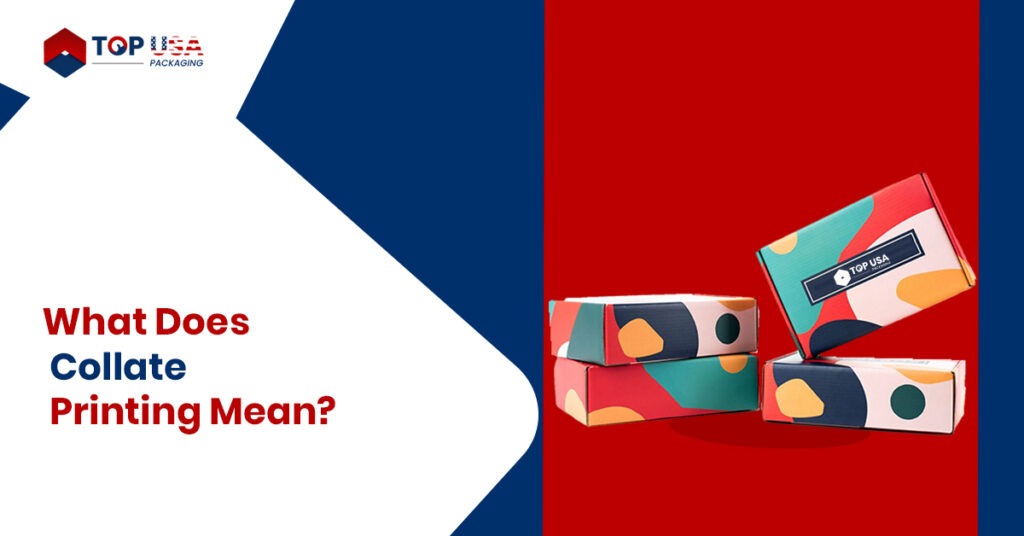
In printing, “collate” refers to assembling multiple printed sets in a specific, sequential order. When the collate on printer function is enabled, the printer organizes the pages to form complete sets in the correct, readable sequence. But the question arises “what is collate when printing?”
For instance, if you print several copies of a document with pages 1, 2, and 3 with collation enabled, the printer creates sets like:
- Copy 1: Pages 1, 2, 3
- Copy 2: Pages 1, 2, 3
- Copy 3: Pages 1, 2, 3
Without collation, the printer would print all copies of each page together, resulting in:
- All copies of Page 1
- All copies of Page 2
- All copies of Page 3
Paper collation saves time and effort when manually arranging documents, especially for packets or booklets that need to be in the correct order.
How Does Paper Collation Work?
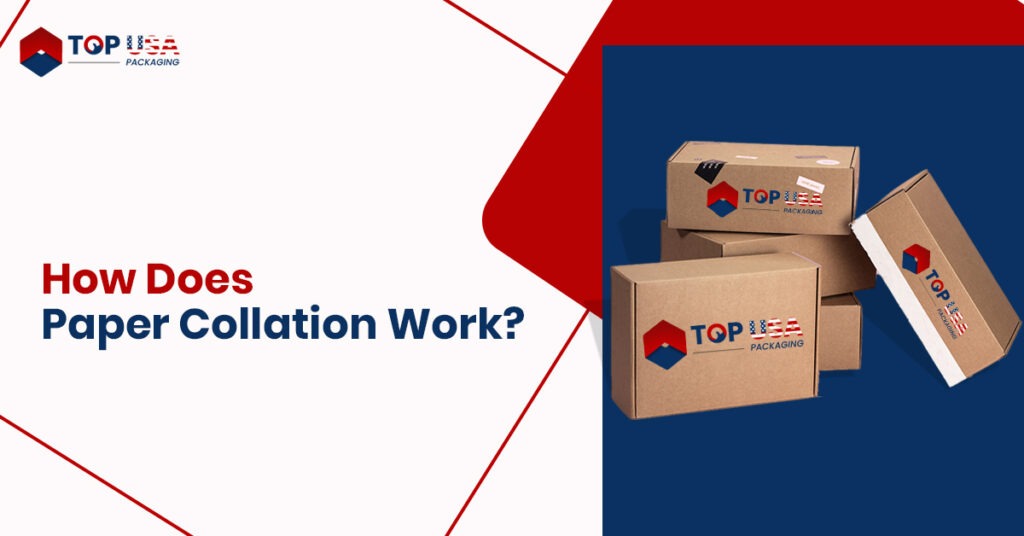
To know how paper collation actually works or how can you collate for printing? The major query is, what does collate mean on printer settings? Collate printing meaning can be defined with its processing ways, lets discuss the paper collation methods:
Manual Collation
Manual collation is the old-fashioned way. It involves physically comparing and merging multiple printed copies or sets of text pages. This requires meticulous attention to detail to ensure all the pieces are grouped and aligned correctly, like sorting letters into the right order. Manual collation is often used for printed publications like complete magazines with different versions or editions, where accuracy is paramount.
Automatic Collation
Automatic collation, on the other hand, is a time-saving hero. It uses software programs to analyze and compare different parts of a text electronically. These tools can collect printing data in various ways, often looking at formatting elements like font style, size, and spacing to identify any differences between the files. Because it’s automated, this process is much faster and more efficient than manual collation, making it the preferred method for most printing tasks.
Benefits of Using Paper Collation
Utilizing paper collation becomes easier after understanding what does collate printing mean? Collate on printer has the following advantages:
- Cost-Effective: Collation streamlines the printing process compared to traditional methods that require more steps per page. This eliminates the need for manual sorting and organizing, significantly reducing labor costs.
- Enhanced Quality: Automation ensures consistent, high-precision collate printing of every page. Collation guarantees accurate formatting and placement within materials like books or magazines, minimizing errors.
- Fast Production: Paper collation significantly speeds up printing compared to manual methods. Eliminating the need for human sorting saves considerable time, and automated arrangement reduces the need for reprints due to misplaced pages.
- User-Friendly: Paper collation features in printing machines are simple to understand and use. This allows even those unfamiliar with the process to produce high-quality documents quickly and easily.
Read More: How Much Does a Box of Paper Weigh
Collated vs Uncollated Copies
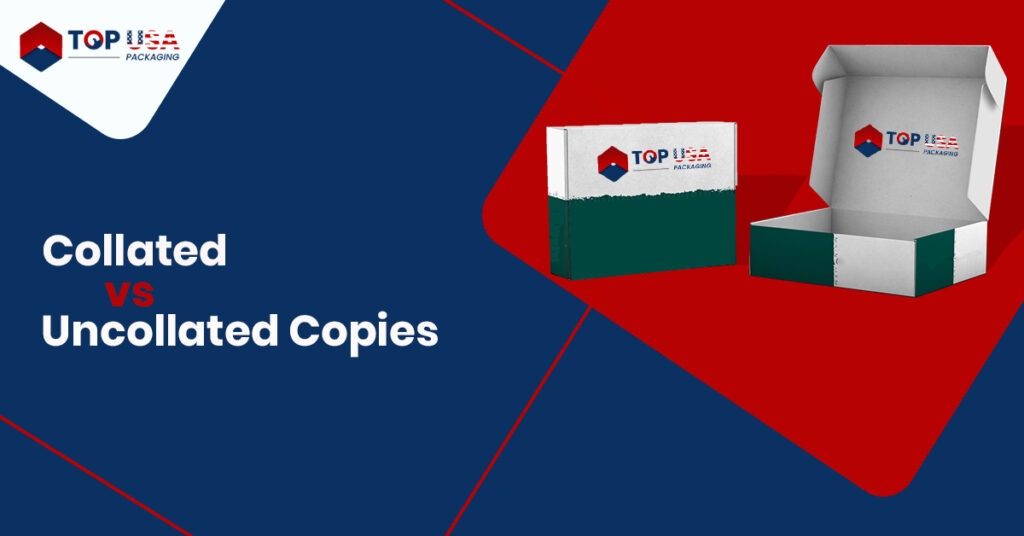
Collated vs uncollated copies are one of the important topics to discuss when learning about what does collate mean when printing? So, lets dive in.
There are two main ways printed copies can be arranged in collate printing: collated and uncollated. Each approach serves a different purpose.
- Collated Copies: This printing method, often used for custom printed boxes (even in small quantities), ensures that multiple sheets or copies of the same document are printed in the correct order. Imagine a magazine, all the pages for each copy are printed together before moving on to the next copy.
- Uncollated Copies: In contrast, uncollated printing doesn’t guarantee any specific order in collate printing. This is useful when the sequence of the printed copies doesn’t matter. For example, if you’re printing flyers for an event, you might not care if all the flyers for the same design are printed together. Uncollated printing simplifies the process for these types of jobs.
When Does Collated Printing Shine?
- Presentations & Meetings: Collate printing saves time when printing multi-page documents for presentations or meetings. No need to manually sort and bind pages afterward, everything comes out perfectly assembled when you collate for printing. Imagine printing handouts for 20 people, uncollated printing might give you a stack of the first page, then the second, and so on. Paper collation ensures each complete handout is printed together.
- Binding Efficiency: Collated printing streamlines the binding process, whether manual or with a binding machine. For example, a five-page document printed multiple times will have pages 1-5 printed in the correct order for each copy. This saves time and reduces errors during binding.
- Ink & Toner Savings: Running low on ink or toner? Collate on printer ensures you don’t waste a partial print run. With uncollated printing, you might end up with incomplete copies if you run out of supplies mid-job.
- Time Crunch: When deadlines loom, collated printing saves valuable time compared to manually assembling documents later.
Read Also: Mylar Bag Sizes – Inclusive Guide
When Does Uncollated Printing Makes Sense?
- Booklets: Certain projects, like booklets, require pages to be printed in a specific, non-sequential order. Uncollated printing allows for this flexibility.
- Quality Control: When checking print quality or consistency, uncollated printing makes it easier to compare individual pages side-by-side for any issues.
How to Confirm That Your Printer is Collating?
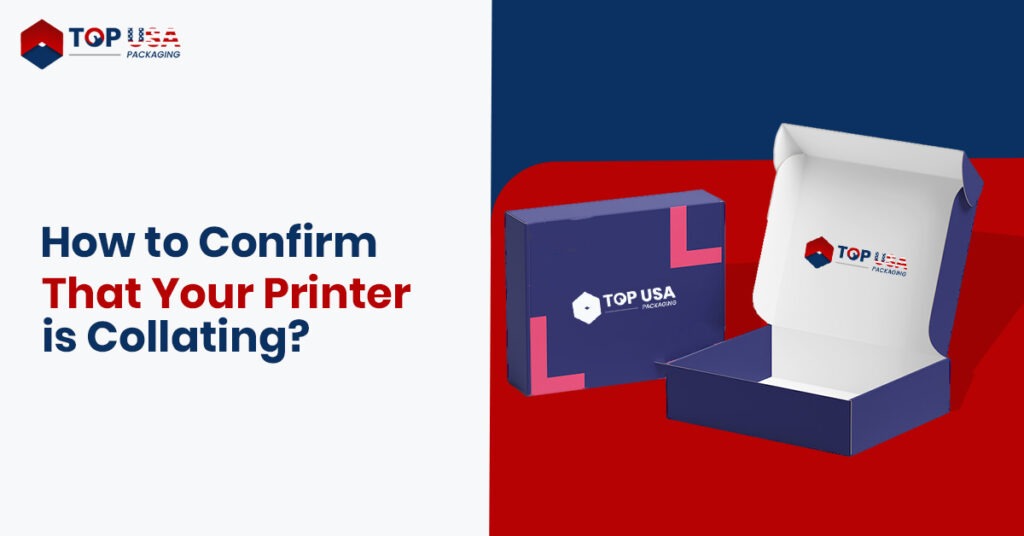
It is generally the case that the option to collate for printing is available in your print dialogue box whenever you print a document. This option is typically enabled by default; however, if it’s not, be sure to check it to ensure your document prints correctly. If you’re encountering collation issues, it’s likely a problem with your printer’s settings.
Paper collation is one of the most valuable features of modern printing devices. It eliminates the need for manually reordering each page to create clear copies. Your copies will print in the correct order and be ready for distribution immediately. With this article. We believe that you know the importance of “What does collate printing mean”. For more information, contact us at TopUSAPackaging. Our dedicated team is here to promptly address any queries you may have.

